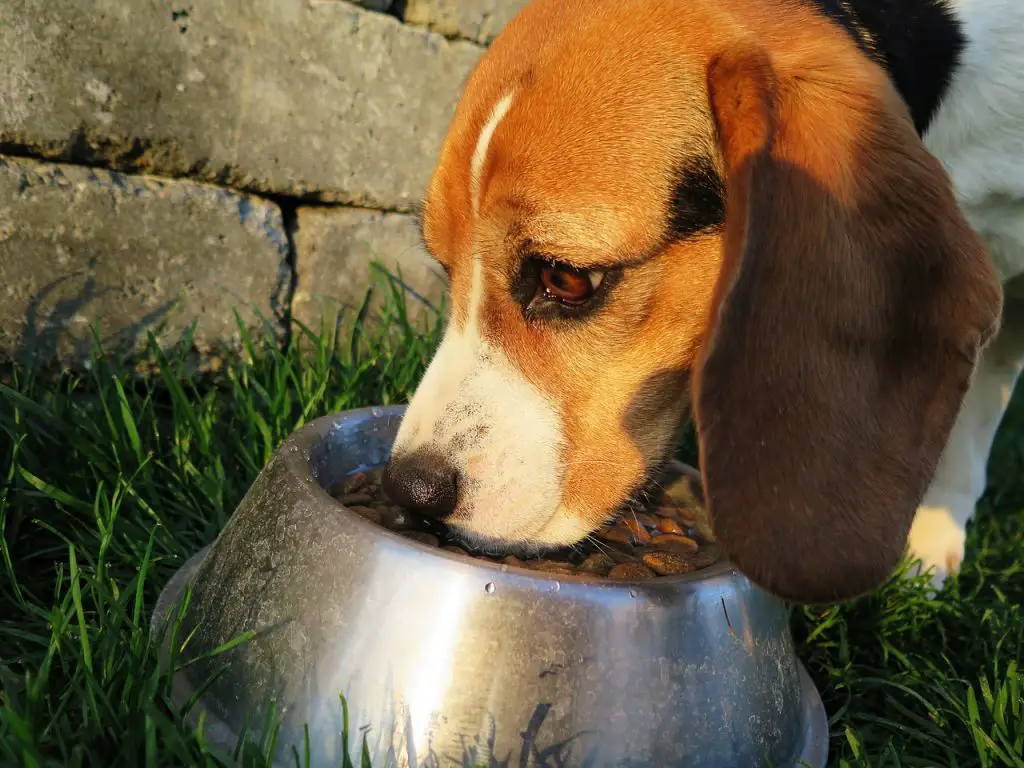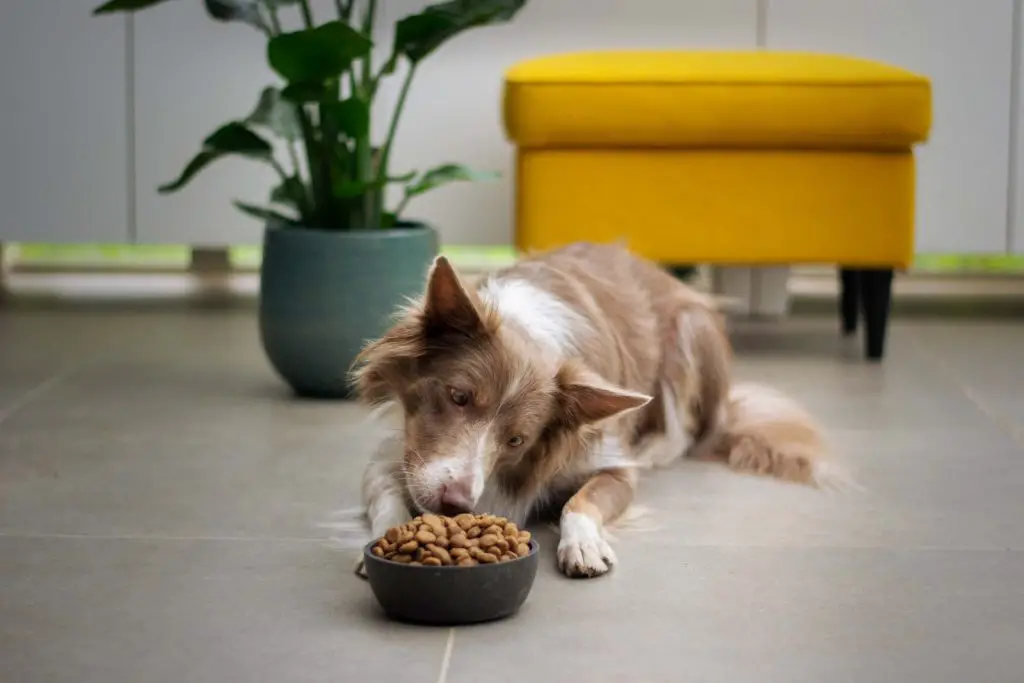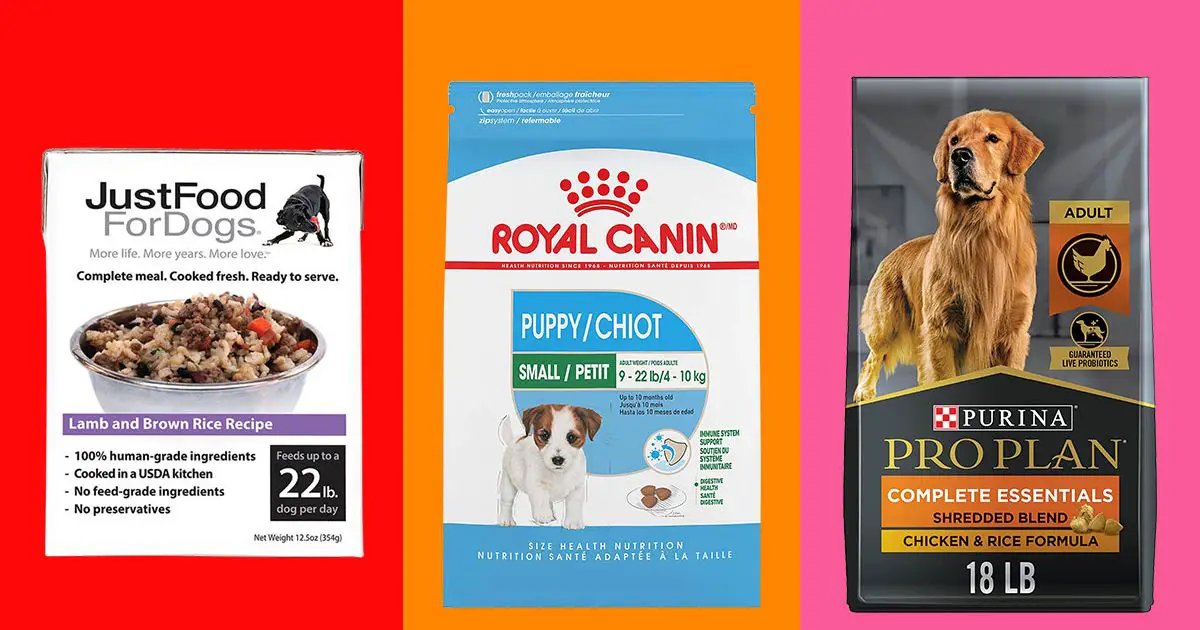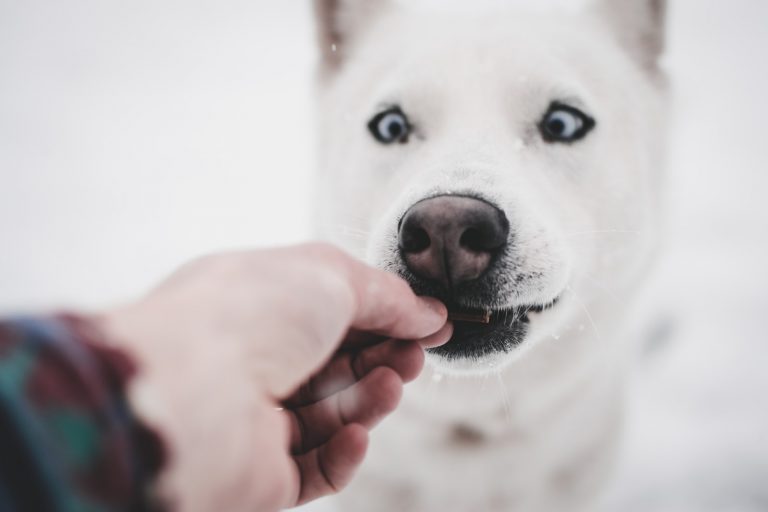The pet food industry is a growing business and there is an array of dog foods that vary in size, shape, and texture. This means that it may be a challenge for most people to make the right decision for their pets. If you are reading this blog, then you are one of those pet parents who really care about their dogs’ nutrition and welfare. Here we will give you a comprehensive guide on dog food types and their reviews to help you decide what to feed your companion. This is a responsibility that must be taken seriously and your dog must trust you in what you give him as food. Feeding your dog correctly does not only help him to grow, but it also helps in preventing some food-borne diseases as he ages. So, what are the different types of dog foods? How are they made? How to best choose the right food for the right dog?
Types of Dog Foods and Their Composition
There are many types of dog food on the market. As you may know, they are classified into 4 categories based on their water content and manufacturing process: there are dry foods, wet foods, semi-moist foods and raw foods.

Dry Foods:
Dry pet foods are the most common type of food purchased in the United States. These are foods that have most of their moisture removed, either by heat or dehydration, to extend their preservation. The final products are foods that contain less than 10% moisture. Kibbles, biscuits, treats, and snacks are all examples of dry foods.
Dry foods are complete diets. Their ingredients include cereal grains like wheat, meat, poultry and fish products, milk products, vegetable fats, vitamins, and minerals. The ingredients are well mixed and molded in small pieces of different shapes and colors. Starch is added to allow processing and gives them a good texture. Some flavors and sugars are added to increase the palatability of the food.
Dry pet foods have a high energetic density* that ranges between 3000 and 4500 kilocalories (kcal) of metabolizable energy (ME)/kilogram (kg). They have between 8% to 22% of fat and between 18% to 32% of proteins.
There is another type of dry food, which is dehydrated. Dehydrated foods are made using the dehydration of raw ingredients. Dehydration consists of removing moisture from the food using a warm flow of air instead of heat. This process better preserves the quality of raw foods without the need to add preservatives.
Wet Foods:
Wet dog foods are foods that contain raw ingredients without any dehydration process. Wet pet foods ingredients consist of unprocessed muscle meats, poultry or fish byproducts, cereal grains, vegetable proteins, vitamins, and minerals, in most cases without using preservatives. They come in the form of canned/pouched products. Once wet food has been opened, it needs to be covered and put in the fridge for further use so that it does not spoil.
Wet foods are of 2 types: complete wet foods and wet dietary supplements. Complete wet foods are nutritionally balanced, while wet supplements are intended to be served as an additive to dry foods. Wet foods are very appetizing and very palatable for dogs.
Semi-Moist Foods:
As their name suggests, semi-moist foods contain a higher proportion of moisture than dry foods and less than wet foods. Their moisture level ranges between 15 to 30%. They contain meat, cereal grains, fats and carbohydrates, minerals, vitamins, and preservatives to extend their shelf-life. Generally, semi-moist foods have a low energy density and a softer texture than dry foods, and they are very appealing to dogs.
Raw foods
Raw dog foods are foods that are unprocessed. They contain raw ingredients without preservatives. Commercial raw foods are sold as frozen or freeze-dried products. Raw foods can also mean homemade foods made with raw ingredients.
Commercial Raw Foods
Commercial dog raw foods are foods that contain fresh ingredients that are minimally processed. They have the advantage of retaining a high level of nutrients and vitamins. They include fresh meat, chickens, vegetables, eggs, grains, vitamins, and minerals.
These foods are sold as frozen foods and freeze-dried foods. They should be stored in the freezer until consumption. This style of food is less popular than other types. In fact, less than 3% of pet parents in the United States feed their dogs with this food type.
Homemade Raw Diets
Many people prefer homemade recipes that consist of fresh ingredients, such as meat, cereal grains, eggs, pasta, vegetables. Proponents of homemade diets prefer to feed their dog’s with food that is free of additives and preservatives, typically at a low cost. Others believe that dogs are strictly carnivorous and should only be fed meat. There are some that believe that there are therapeutic values in some such ingredients. These diets require a good understanding of dog nutrition because, most of the time, diets are imbalanced and lead to deficiencies if not correctly supplemented.

What is Best for Your Dog?
Dogs are omnivorous. They developed similar nutritional preferences as that of humans after their domestication. Dogs used to eat the leftovers from humans, and because of this, they are able to digest starches and sugars. Like humans, dogs eat to satisfy their body energy requirements. This energy is used to help vital organs to function properly and perform daily activities.
Energy requirements vary depending on the age, sex, life stage, and the lifestyle of the dog. Scientists have invented a mathematical formula to estimate the daily energy requirements for every single breed of dog. It is expressed in metabolizable energy per day (ME/day).
An adult dog with a sedentary lifestyle requires 95 x wkg0.75 of ME (metabolizable energy) per day. Resting energy requirements (RER) (or adult maintenance) help to determine the amount of food they need based on the energy density of the food. So for an example, a 10 Kg dog (22 lb) will require: 95 × (10 kg)0.75 = 534 kcal ME/day.
Active dogs require more energy since they are continually burning calories. The formula is 130 x wkg0.75. Let’s take an example of a 10 Kg dog. He requires 130 × (10 kg)0.75 = 731 kcal ME/day.
Growing puppies or pregnant bitches’ energy requirements are calculated differently. We use the same formula to determine the energy requirements for rest. Then we use the chart #2 to apply some rules. You can calculate the energy requirements of your own dog using this formula and the chart.
To determine the amount of food to give to your dog, read the food package label to see the energy density of the food: How many Kilocalories (Kcal) are there in 1Kg of that food. Suppose you have a dry food with an energy density of 3800Kcal/Kg. A 10 Kg adult dog will require (534/3800) = 0.140 Kg of that food per day. That means the dog will eat 140 grams of that food for the whole day.
There are some dog breeds that are an exception to these rules. Adult Golden retrievers and Labradors seem to require 20% less energy than normal dogs. Neutered dogs too require the same as Golden retrievers.
If you are not comfortable with calculations and you don’t want to complicate things, all you have to do is to follow the guidelines on the pet food label. There are charts on each food package that describe how much to feed your dog.
If you like to feed your dog homemade foods, make sure the diet is balanced with a sufficient amount of carbohydrates, proteins, and fats, as well as vitamins and minerals. This may be done by supplementing the ration with minerals and vitamins. Ask your vet for the correct dosages. Vegetables are also important in a dogs nutrition as they provide fibers to help avoid constipation.
To estimate the right amount of homemade food, the rule of thumb consists of 30g of homemade food for every 1Kg of the dog’s body weight. It is advisable to respect the ratio of (1/3 of meat, 1/3 of carbohydrates, and 1/3 of vegetables) for each meal. So, a dog with 5 Kg will need approximately 150g of food per day containing 50g of vegetables, 50g of meat and 50g of carbohydrates.
What is the Best Dog Food?
What is the best food to feed a dog? Which do you choose? The tuna or the chicken? The lamb or the beef? The wet or the dry?
For healthy dogs, animal nutritionists recommend dry foods because they are complete and are adapted to the different life stages of the dog. The most convenient type of food, for storage and for feeding, is dry kibble. The food bowl can be filled for the pet to eat at its own pace without worrying about spoilage. Dry foods are more economically cost-effective.
Dry foods do not provide as much moisture as wet foods. The lack of hydration in older dogs can be problematic. Wet foods are a good solution to fight dehydration. But don’t worry if you feed your dog any other type, because both dry foods and wet foods should satisfy your pet’s nutritional requirements as long as they are made with quality ingredients. You can also choose both wet and dry foods; You can mix them together in the same bowl. That way you will have a better chance of food acceptability and this will help to avoid food aversion that may result from always serving the same food. Make your dog’s diet as varied as possible; never stick to one type of food.
When buying a pet food, make a habit of reading the label and only choose the good food. Good foods are those whose composition starts with meat or chicken. Bad foods are grain-based diets (corn, soybean, …). Always remember to talk to your veterinarian if you have any concerns about your dog’s diet. There are some particular considerations that must be applied regarding organic diseases or allergies.
Raw foods and homemade recipes are an excellent choice. They help your dog live longer and avoid chronic food-borne diseases like obesity and diabetes. However, this option may be too expensive for most pet owners.







